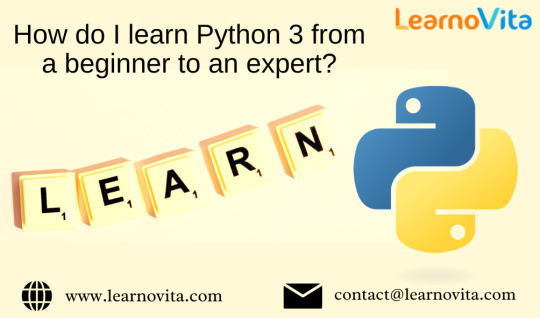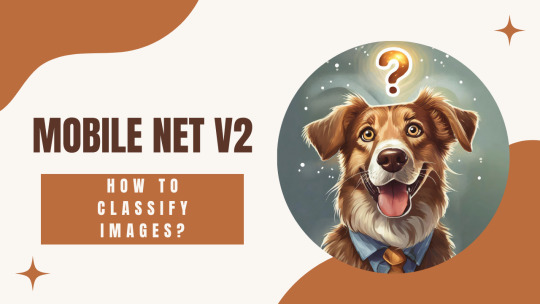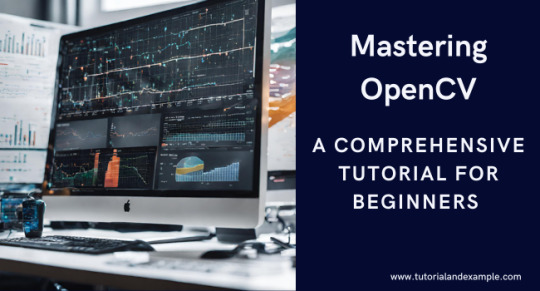#Python OpenCV Tutorial
Explore tagged Tumblr posts
Text
Turn your face into a hilariously cartoonified version of itself using OpenCV and Python. Learn how to cartoonify real-time webcam video using OpenCV and Python. A short yet fun tutorial on edge detection, color filtering, and live video effects.
0 notes
Text
Augmented Realty Bubble Pop Tutorial Bagian 1: Pengaturan Lingkungan Pengembangan
Selamat datang di seri tutorial tentang bagaimana membangun game sederhana menggunakan Python, OpenCV, dan MediaPipe! Dalam tutorial pertama ini, kita akan mempersiapkan lingkungan pengembangan yang diperlukan untuk proyek kita. Tutorial ini sangat penting karena memastikan Anda memiliki semua alat dan pustaka yang diperlukan sebelum kita mulai menulis kode. Mari kita mulai! Langkah 1:…
#Augmented Reality#Augmented Reality Tutorial#game AR bubble pop#instalasi anaconda#membuat environment python#opencv mediapipe pygame#setup python game#tutorial python pemula
0 notes
Text
LEARN ABOUT IMAGE PROCESSING
Image fusion is a process where two or more images are combined to create a single, more informative or visually enhanced image. This technique is used in various fields like photography, remote sensing, medical imaging, and computer vision.

GET PARTICLE IMAGE PROCESSING VIDEO TUTORIAL 🦄
The goal of image fusion is to enhance the overall quality of the final image by combining information from multiple sources while retaining the most relevant details.
Feature-Level Fusion: Instead of combining pixel values, this method focuses on merging the features extracted from images. It's often used in computer vision for object recognition and tracking.
Libraries and Frameworks for Machine Learning Image Processing:
OpenCV-Python is a library of Python bindings designed to solve computer vision problems.
Huge library of image processing algorithms
Open Source + Great Community
Works on both images and videos
Java API Extension
Works with GPUs
Cross-Platform
youtube
#3d printing#ppt image process#image description in alt#image archive#image described#image processing#3d image processing#artificial intelligence#artificial image#techno animation#100 days of productivity#technoland expert#technoland facts#technoart#techno design#Youtube
8 notes
·
View notes
Text
🎣 Classify Fish Images Using MobileNetV2 & TensorFlow 🧠
In this hands-on video, I’ll show you how I built a deep learning model that can classify 9 different species of fish using MobileNetV2 and TensorFlow 2.10 — all trained on a real Kaggle dataset! From dataset splitting to live predictions with OpenCV, this tutorial covers the entire image classification pipeline step-by-step.
🚀 What you’ll learn:
How to preprocess & split image datasets
How to use ImageDataGenerator for clean input pipelines
How to customize MobileNetV2 for your own dataset
How to freeze layers, fine-tune, and save your model
How to run predictions with OpenCV overlays!
You can find link for the code in the blog: https://eranfeit.net/how-to-actually-fine-tune-mobilenetv2-classify-9-fish-species/
You can find more tutorials, and join my newsletter here : https://eranfeit.net/
👉 Watch the full tutorial here: https://youtu.be/9FMVlhOGDoo
Enjoy
Eran
#Python #ImageClassification #MobileNetV2
#artificial intelligence#convolutional neural network#deep learning#tensorflow#python#machine learning
0 notes
Text
The Most Important Step in Learning Computer Vision is Writing Your First Line of Code.
Computer Vision is one of the most in-demand skills in the tech industry. But moving from theory to practical application can be intimidating. Where do you even start?
You start with a simple, achievable project.
I've published a step-by-step tutorial specifically for beginners. It's not about complex theory; it's about building momentum and confidence. You will learn how to:
✅ Install and set up the essential OpenCV library in Python. ✅ Write a script to load, display, and manipulate your first image. ✅ Understand the fundamental code blocks used in nearly every CV project.
Investing 15 minutes in this first practical step can be the catalyst for your entire learning journey.
🔗 Build your first project today
0 notes
Text
Real-Time Object Detection Using OpenCV & Python
Okay, I need to write a comprehensive tutorial about “Real-Time Object Detection with OpenCV and Python.” The user has provided a detailed structure that I must follow, so I should first break down each section to understand what needs to be covered. Starting with the Introduction, I should briefly explain what real-time object detection is and why it’s important. I’ll mention applications like…
0 notes
Text
Mastering Python 3: A Step-by-Step Guide
Python 3 is a powerful, versatile, and beginner-friendly programming language used in various fields, including web development, data science, automation, and artificial intelligence. Whether you are a complete beginner or looking to enhance your skills, following a structured learning approach will help you master Python efficiently.
Considering the kind support of Python Course in Chennai Whatever your level of experience or reason for switching from another programming language, learning Python gets much more fun.

1. Getting Started with Python Basics
Before diving into complex topics, it’s essential to understand the fundamentals of Python. Learn about Python syntax, variables, and data types such as strings, integers, lists, tuples, and dictionaries. Master control structures like if-else statements, loops (for and while), and functions to write reusable and efficient code.
2. Writing and Running Your First Programs
Hands-on practice is key to mastering Python. Start by writing simple programs such as a calculator, a to-do list, or a number guessing game. Use interactive coding platforms like Codecademy, Replit, or Jupyter Notebook to test and debug your code easily.
3. Understanding Object-Oriented Programming (OOP)
Object-Oriented Programming is essential for developing scalable applications. Learn how to create and use classes and objects. Understand key OOP principles like inheritance, encapsulation, polymorphism, and abstraction. Try building a small project using OOP concepts, such as a basic inventory system or a contact management application.
4. Diving into Intermediate Python Concepts
Once you’re comfortable with the basics, explore more advanced topics, including:
File Handling: Reading and writing files in Python.
Error Handling: Using try-except blocks to handle exceptions.
Regular Expressions: Searching and manipulating text data efficiently.
Modules and Packages: Organizing code into reusable components.
5. Working with Databases and APIs
Python is widely used for data management. Learn how to interact with:
SQL Databases like MySQL and SQLite to store structured data.
NoSQL Databases like MongoDB for flexible data storage.
APIs using the requests library to fetch and integrate external data. With the aid of Best Online Training & Placement Programs, which offer comprehensive training and job placement support to anyone looking to develop their talents, it’s easier to learn this tool and advance your career.

6. Choosing a Specialization in Python
Depending on your career goals, Python offers multiple specializations:
Web Development – Learn Django or Flask for backend development.
Data Science & Machine Learning – Work with Pandas, NumPy, Scikit-learn, and TensorFlow.
Automation & Scripting – Use Selenium, PyAutoGUI, and OpenCV.
Cybersecurity & Ethical Hacking – Explore penetration testing tools with Python.
7. Building Real-World Python Projects
Applying Python to real-world projects enhances learning and problem-solving skills. Try building:
A web scraper using BeautifulSoup.
A chatbot with AI integration.
A data visualization dashboard using Matplotlib and Seaborn.
8. Contributing to Open Source and Networking
Join the Python community by contributing to open-source projects on GitHub. Engage in discussions on platforms like Stack Overflow, Reddit, and Discord. Collaborating with others helps you learn best practices and stay updated with the latest trends.
9. Preparing for Python Certifications and Job Interviews
If you aim to use Python professionally, consider earning certifications such as:
Google IT Automation with Python.
Microsoft Certified: Python Associate.
PCEP (Certified Entry-Level Python Programmer).
Prepare for job interviews by solving Python coding challenges on LeetCode, CodeWars, and HackerRank.
10. Staying Updated and Continuous Learning
Python evolves with new libraries and frameworks. Keep learning by following Python blogs, watching tutorials, and working on new projects. Experimenting with trending technologies like AI, blockchain, and cloud computing will keep your Python skills relevant and in demand.
By following this step-by-step guide, practicing regularly, and working on real-world projects, you can progress from a beginner to an expert in Python 3 and unlock a wide range of career opportunities.
0 notes
Text

Learn the basics of computer vision by starting with Python, libraries like OpenCV or TensorFlow, and foundational concepts like image processing. Explore tutorials, online courses, and hands-on projects to build practical skills and understanding.
To know more Visit: www.iabac.org
#iabac#online certification#certification#machine learning#data analytics#professional certification#iabac certification#data science#hr#hr analytics
0 notes
Text
The Power of Python
In the ever-evolving world of technology, programming skills are in high demand, and Python has emerged as one of the most popular languages to learn. Whether you’re a beginner exploring the tech field or a seasoned professional looking to upskill, learning Python offers numerous benefits. Here's why Python is a must-learn language for anyone stepping into the tech ecosystem.
1. Beginner-Friendly Syntax
Python is renowned for its simplicity and readability, making it an ideal choice for beginners. The syntax is straightforward and closely resembles the English language, reducing the learning curve for new programmers. This user-friendly nature allows learners to focus on problem-solving rather than struggling with complex syntax.
2. Versatility Across Industries
Python is a general-purpose programming language used across various industries. From web development to data science, artificial intelligence (AI), machine learning (ML), automation, and even game development, Python’s versatility makes it an invaluable skill in today’s job market.
3. Extensive Libraries and Frameworks
Python’s rich ecosystem of libraries and frameworks simplifies complex tasks. For example:
Pandas and NumPy for data analysis
TensorFlow and PyTorch for machine learning
Flask and Django for web development
Matplotlib and Seaborn for data visualization These tools empower developers to build robust applications efficiently.
4. High Demand in the Job Market
Python is one of the most sought-after skills in the tech industry. Roles like data scientists, machine learning engineers, software developers, and web developers often list Python as a required skill. Learning Python can significantly enhance your employability and open doors to lucrative career opportunities.
5. Supportive Community and Resources
Python boasts a vast and active community of developers worldwide. This community ensures that learners and professionals have access to ample resources, tutorials, forums, and documentation. No matter the challenge, you’re likely to find solutions or guidance from fellow Python enthusiasts.
6. Automation Made Easy
Python simplifies the process of automating repetitive tasks, saving time and increasing productivity. With libraries like Selenium and BeautifulSoup, you can automate tasks such as web scraping, data entry, and testing, enhancing efficiency in personal and professional projects.
7. Platform Independence
Python is a cross-platform language, meaning you can write and run Python code on various operating systems, including Windows, macOS, and Linux. This flexibility ensures that your skills are applicable across diverse environments.
8. Great for Data Science and AI
In the age of big data, Python is a cornerstone language for data science and AI. Its ease of use, coupled with powerful libraries like Scikit-learn, Keras, and OpenCV, makes it the go-to choice for data-driven fields. Python’s capabilities allow professionals to analyze data, build predictive models, and create intelligent systems effectively.
9. Encourages Problem-Solving Skills
Learning Python not only teaches you how to code but also helps you develop critical thinking and problem-solving skills. These skills are transferable across various domains, making Python a valuable tool for both technical and non-technical roles.
10. Future-Proof Your Career
Python’s growth trajectory shows no signs of slowing down. Its widespread adoption in emerging fields like AI, machine learning, and blockchain ensures that Python will remain relevant for years to come. By learning Python, you’re investing in a skill that will keep you ahead in the tech landscape.
Conclusion
Python is more than just a programming language; it’s a gateway to endless possibilities. Whether you aspire to develop cutting-edge applications, analyze data, or automate tasks, Python offers the tools and community to help you succeed. Start your Python journey today and unlock a world of opportunities in technology and beyond.
#datascience#data analytics#python#data analysis#machinelearning#artificial intelligence#youtube#ai#data science course#digital marketing
0 notes
Text
How can Python be helpful in artificial intelligence and machine learning (AI and ML)?
Besides this trend, Python became the de facto language for AI and ML due to the many advantages it presents:
1. Readability and Simplicity: Python syntax is neat and well-structured. As a result, it's much easier to read and understand by novices and experienced programmers alike. Its simplicity helps in code readability and maintainability, which again becomes critical while dealing with challenging models and algorithms associated with AI and ML projects.
2. Rich Ecosystem of Libraries: Python has an extensive ecosystem of libraries and frameworks purpose-built for AI and ML. Some of the most used are as follows:
NumPy: Provides extensive numerical operations on arrays and matrices, which are imperative in AI and ML for mathematical computations.
Pandas: Allows the utilization of very powerful data manipulation and analysis tools. It easily allows working with structured data.
Scikit-learn: It provides a large range of algorithms for machine learning, including but not limited to classification, regression, unsupervised clustering, and dimensionality reduction.
TensorFlow: This is one of the most used deep learning libraries provided by Google. This library allows users to achieve maximum flexibility and scalability for complex neural network modeling.
PyTorch: It is also one of the most used deep learning frameworks. The main reason behind its usage relates to its dynamic computational graph and simplicity; hence, it is widely utilized in research areas.
3. Platform Independence: Python is a platform-independent language, which can work on different operating systems such as Windows, macOS, and Linux. It also means highly adaptable to various environments.
4. Strong Community Support: Python has an enormous community of active developers-a fact that means there will be plenty of resources, tutorials, and forums where one could learn and find problem solutions.
The integration with other tools and utilities working in AI and ML, such as a database, cloud platforms, and visualization libraries, is very easy to perform in Python.
Specific Applications of Python in AI and Machine Learning:
Natural Language Processing: Python has superb libraries-NLTK, spaCy, and Gensim-capable of doing text classification, sentiment analysis, and machine translation.
Computer Vision: OpenCV and TensorFlow are some of the libraries used for image recognition, object detection, and image segmentation.
Recommendation Systems: The collaborative filtering and content-based recommendation systems can be built using Python.
Reinforcement Learning: It is used to train agents to make decisions in a complicated environment with the help of libraries like OpenAI Gym and TensorFlow.
Conclusion In particular, readability, strong libraries, platform independence, and a great community-a combination of factors-are the reasons why Python is supreme for development in AI and ML. That's where Python shines-through its flexibility and adaptability, it's capable of handling anything from a simple data analysis task to complex deep learning models.
0 notes
Text
Membuat Augmented Reality Game Bubble Pop dengan Python
Pernahkah Anda ingin membuat game Augmented Reality (AR) sederhana dengan Python? Dalam serangkaian tutorial ini, Saya akan memandu Anda melalui langkah-langkah untuk menciptakan game Bubble Pop berbasis AR, di mana pemain dapat memecahkan gelembung yang muncul di layar hanya dengan gerakan tangan mereka. Proyek ini tidak hanya menyenangkan tetapi juga merupakan cara yang efektif untuk…
#Augmented Reality game dengan Python#Bubble Pop game Python#OpenCV dan MediaPipe#Python AR game tutorial#tutorial deteksi tangan
0 notes
Text
Decoding handwritten text using machine learning algorithms.

To develop a program for decoding handwritten text using machine learning algorithms in Python, you can use libraries such as TensorFlow, OpenCV, and Keras.
Here's a high-level overview of the process:
1. Install the required libraries: You'll need to install TensorFlow, Keras, and OpenCV for this task. You can also use the HTRPipeline package for a more straightforward approach.
2. Preprocess the image: Convert the scanned image into a suitable format, such as grayscale or color, and apply any necessary image processing techniques like thresholding, blurring, or sharpening to improve text recognition.
3. Train a neural network: Train a Convolutional Neural Network (CNN) or Recurrent Neural Network (RNN) on a dataset of labeled images to recognize handwritten text. You can use the IAM dataset for this purpose.
4. Implement an OCR system: Use the trained model to detect and read words from the preprocessed image. You can use libraries like pytesseract or Google Cloud Vision OCR for this step.
5. Postprocess the text: After extracting the text from the image, you can use spell-checking algorithms or other text processing techniques to improve the accuracy and readability of the decoded text.
For a more detailed tutorial on building a handwritten text recognition system using TensorFlow, you can refer to this tutorial on Towards Data Science. Additionally, you can explore the HTRPipeline package for a more straightforward approach to handwritten text recognition.
Python can be used to develop programs that decode handwritten text using machine learning algorithms.
Here's a code snippet in Python to perform handwritten text decoding using machine learning algorithms:
```python
# Import required libraries
import cv2
import pytesseract
from PIL import Image
# Load the image
img = cv2.imread('handwritten_text.png')
# Preprocess the image
gray = cv2.cvtColor(img, cv2.COLOR_BGR2GRAY)
gray = cv2.medianBlur(gray, 3)
gray = cv2.threshold(gray, 0, 255, cv2.THRESH_BINARY + cv2.THRESH_OTSU)[1]
# Perform OCR using Pytesseract
text = pytesseract.image_to_string(Image.fromarray(gray))
# Print the decoded text
print(text)
```
This code uses the OpenCV library to preprocess the image by converting it to grayscale, applying a median blur, and thresholding it. Then, it uses the Pytesseract library to perform OCR and extract the text from the preprocessed image. Finally, it prints the decoded text to the console.
Note that this code is just a basic example and may not work well for all types of handwritten text. For more advanced handwritten text recognition, you can use machine learning algorithms like Convolutional Neural Networks (CNNs) or Recurrent Neural Networks (RNNs) trained on large datalabeled images. You can refer to the resources in the search results for more information on how to build such systems.

RDIDINI PROMPT ENGINEER
0 notes
Text
#coding#artificial intelligence#software engineering#frontend#learn to code#html5 css3#python#css3#htmlcoding#html5#datascience#data scientist#opencv
0 notes
Text

Super-Quick Image Classification with MobileNetV2
How to classify images using MobileNet V2 ? Want to turn any JPG into a set of top-5 predictions in under 5 minutes?
In this hands-on tutorial I’ll walk you line-by-line through loading MobileNetV2, prepping an image with OpenCV, and decoding the results—all in pure Python.
Perfect for beginners who need a lightweight model or anyone looking to add instant AI super-powers to an app.
What You’ll Learn 🔍:
Loading MobileNetV2 pretrained on ImageNet (1000 classes)
Reading images with OpenCV and converting BGR → RGB
Resizing to 224×224 & batching with np.expand_dims
Using preprocess_input (scales pixels to -1…1)
Running inference on CPU/GPU (model.predict)
Grabbing the single highest class with np.argmax
Getting human-readable labels & probabilities via decode_predictions
You can find link for the code in the blog : https://eranfeit.net/super-quick-image-classification-with-mobilenetv2/
You can find more tutorials, and join my newsletter here : https://eranfeit.net/
Check out our tutorial : https://youtu.be/Nhe7WrkXnpM&list=UULFTiWJJhaH6BviSWKLJUM9sg
Enjoy
Eran
#Python #ImageClassification #MobileNetV2
#artificial intelligence#convolutional neural network#deep learning#youtube#tensorflow#python#machine learning
0 notes
Text

Explore the world of computer vision with our OpenCV tutorial. From fundamental concepts to advanced techniques, master image processing and analysis for real-world applications effortlessly. Dive in now!
0 notes